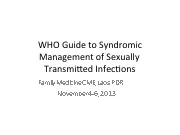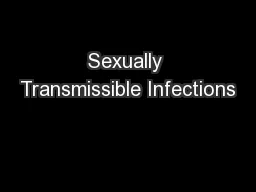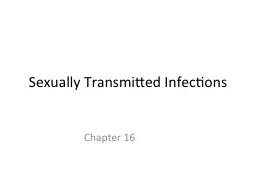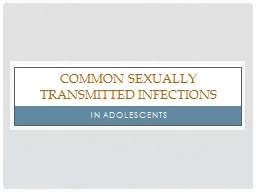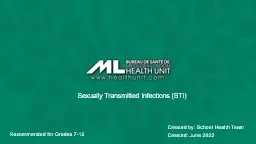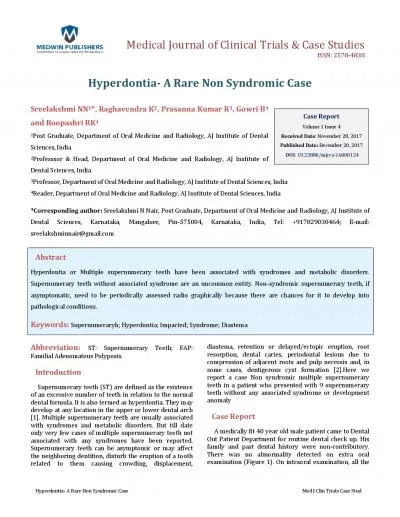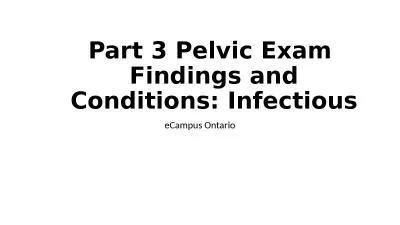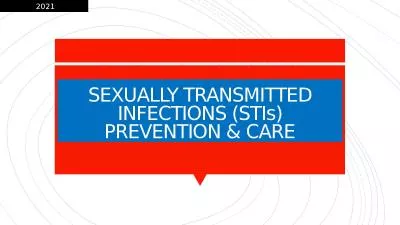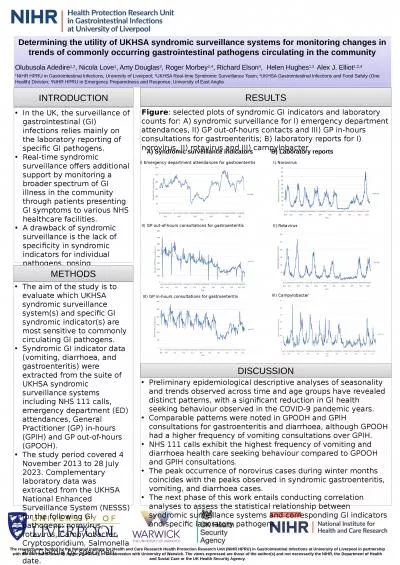PPT-WHO Guide to Syndromic Management of Sexually Transmitted Infections
Author : spiderslipk | Published Date : 2020-06-24
Family Medicine CME Laos PDR November 46 2013 Objectives To recognize various sexually transmitted infections and their syndromes Urethral discharge Genital Ulcer
Presentation Embed Code
Download Presentation
Download Presentation The PPT/PDF document "WHO Guide to Syndromic Management of S..." is the property of its rightful owner. Permission is granted to download and print the materials on this website for personal, non-commercial use only, and to display it on your personal computer provided you do not modify the materials and that you retain all copyright notices contained in the materials. By downloading content from our website, you accept the terms of this agreement.
WHO Guide to Syndromic Management of Sexually Transmitted Infections: Transcript
Download Rules Of Document
"WHO Guide to Syndromic Management of Sexually Transmitted Infections"The content belongs to its owner. You may download and print it for personal use, without modification, and keep all copyright notices. By downloading, you agree to these terms.
Related Documents

